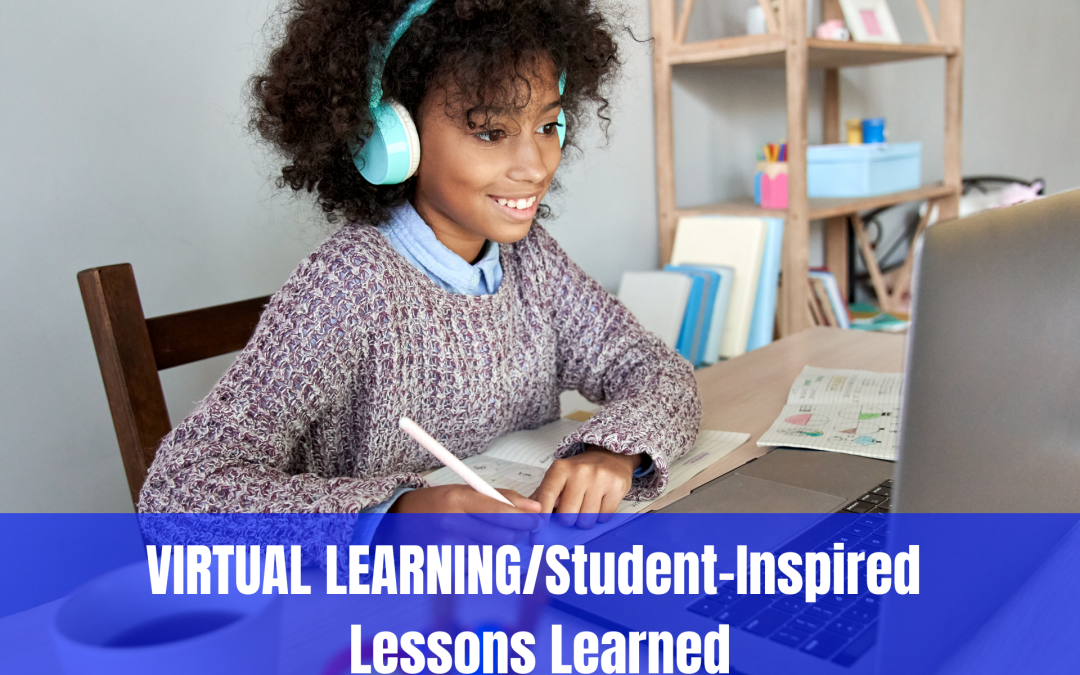PART ONE: The Big Picture
STUDENTS SPEAK OUT ABOUT VIRTUAL EDUCATION
It remains to be seen whether or not the U.S. has gained enough distance from the COVID-19 pandemic to declare victory. However, after more than a year of public and private schools “fading” in and out of virtual learning scenarios, high school students have gained a broad perspective about going to school at home. So much so, that they are able to speak out about what works and what doesn’t work virtually and how the entire virtual education structure has impacted their lives.
During the winter and spring of school year 2020-21, International Virtual Learning Academy (IVLA https://internationalvla.com/ ) a division of Global Student Network (GSN) (www.globalstudentnetwork.com) conducted a scholarship competition directed at high school students currently attending school 100% online. Students were asked to write an essay in answer to the question “What was the most significant takeaway you believe students learned about online education during the coronavirus pandemic?” Over 700 high schoolers responded. Their thoughts and feelings sometimes fell into predictable categories and at other times were surprisingly introspective and focused.
IMPACT ON SCHOOLS
Molly Osborne writing for EdNC on May 10, 2021 (https://www.ednc.org/lessons-learned-from-a-pandemic-school-year/ ), pointed out that “Educators, parents and students have had to reimagine almost every facet of learning in the past year. From early childhood to community college, the COVID-19 pandemic changed school as we knew it.”
Katy Farber of Edutopia wrote as early as May 20,2020 that “teachers have had to work fast to meet the demands of this moment, but as they get a chance to slow down and reflect, some lessons are clear – like the primacy of relationships.” Teaching and learning are clearly rooted in relationships. (https://www.edutopia.org/article/lessons-learned-during-pandemic.)
LESSONS LEARNED
Ten important lessons learned about online school that apply to public and homeschools and were also embedded in student responses to the essay competition mentioned above, include:
- Knowing students well is the most important element of teaching. Teacher-student relationships were reshaped and reformatted via online school and this new design is not going away. Teaching and learning, whether in person or online, are both based in interpersonal relationships.
2. An enhanced level of parent and school collaboration became critically important during the pandemic. The value of working together has never been as important as it has been while everyone is learning how students can attend school at home.
3. The value of students, teachers and parents working together cannot be over-emphasized.
4. All teaching must be specifically tailored to the student’s needs and must remain as flexible as possible given the nature of K to 12 online education.
5. The “hybrid model” – mixing in-class and at-home learning – is likely here to stay. Students who opted to learn from home gained real ownership over their personal learning style and needs, and smaller in-school classes gave teachers the ability to give more direct attention to students who required a bit more direct interaction.
6. The mental health of teachers and students is of crucial importance. New learning models must be directed towards learning experiences that support the well being of both teachers and students. Looking back at the past year of online education, many students admitted that loneliness became something palpable that affected their mental and physical health more than they thought it might.
7. Each person is responsible for the well being of the others in their learning experience. Students have learned the value of weighing their actions to consider the connection between what they do and the well-being of others.
8. Many of the students submitting essays to the scholarship competition acknowledged that their family connections matter more than they realized.
9. Depending heavily on technology-driven learning is something that will not go away. It worked well, is getting better by the day, and there is no going back.
10. Students learned valuable lessons about managing their own time rather than depending on their parents and teachers to pressure them to meet deadlines.
COMING NEXT IN PART TWO: Student Comments and Observations

